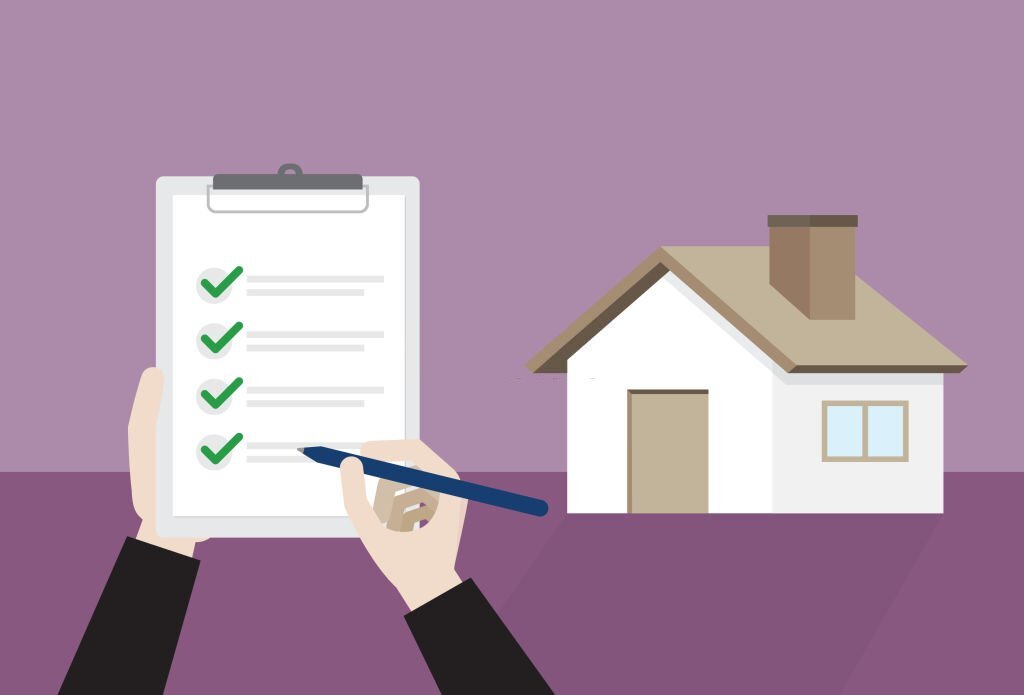Cracking the Code: Demystifying Home Insurance Jargon for Every Homeowner
Introduction:
Owning a home is a significant milestone, but it also comes with responsibilities. One crucial aspect of being a homeowner is having the right insurance coverage to protect your investment. However, the world of home insurance can often be confusing, filled with complex jargon and unfamiliar terms. In this article, we aim to demystify home insurance jargon, helping every homeowner crack the code and understand the key terms and concepts associated with this essential protection.

1. Understanding Home Insurance Jargon
Home insurance is a form of property insurance that provides financial protection in case of damage or loss to a home and its contents. Before diving deeper into the subject, it’s essential to grasp the fundamental importance of home insurance.
1.1 What is Home Insurance?
Home insurance is a contract between the homeowner and the insurance company, where the homeowner pays a premium in exchange for coverage against specific risks. These risks may include damage from fire, theft, natural disasters, or liability claims.
1.2 Importance of Home Insurance
Home insurance is vital for homeowners as it provides financial security and peace of mind. In the event of
unexpected incidents like a fire, burglary, or severe weather damage, having the right home insurance can help cover the costs of repairs or replacement of belongings. Additionally, home insurance offers liability coverage, protecting homeowners from legal and medical expenses if someone gets injured on their property.
2. Common Home Insurance Terms and Definitions
To navigate the world of home insurance effectively, it’s essential to familiarize yourself with common terms and their meanings. Here are some key terms you should know:
2.1 Policy
A policy refers to the written contract between the homeowner and the insurance company, outlining the terms, conditions, and coverage details.
2.2 Premium
The premium is the amount the homeowner pays to the insurance company for the coverage provided. It is usually paid annually or in installments.
2.3 Deductible
A deductible is the initial amount the homeowner must pay out of pocket before the insurance coverage kicks in. It helps determine the cost-sharing between the homeowner and the insurance company.
2.4 Coverage Limit
The coverage limit is the maximum amount the insurance company will pay for a covered loss. It’s crucial to choose a coverage limit that adequately protects your home and belongings.
2.5 Riders
Riders, also known as endorsements or floaters, are additional provisions that can be added to the standard home insurance policy to extend coverage for specific items or events. Examples include jewelry, artwork, or flood insurance.
3. Explaining Different Types of Home Insurance Policies
Home insurance policies come in various forms, each offering different levels of coverage. Understanding these policies will help you choose the one that suits your needs best. Here are the most common types:
3.1 HO-1 and HO-2 Policies
HO-1 and HO-2 policies are basic forms of home insurance that provide coverage for specific perils listed in the policy. These policies offer limited protection and are less comprehensive compared to other options.
3.2 HO-3 Policy
The HO-3 policy is the most common type of home insurance policy. It provides coverage for the structure of the home (dwelling) against all perils, except those specifically excluded in the policy. It also covers personal belongings and offers liability protection.
3.3 HO-4 Policy
An HO-4 policy, also known as renter’s insurance, is designed for tenants who don’t own the property they live in. It offers coverage for personal belongings and liability protection but does not cover the structure of the rented property.
3.4 HO-5 Policy
The HO-5 policy is a comprehensive form of home insurance that offers broader coverage than the HO-3 policy. It provides all-risk coverage for both the dwelling and personal belongings, except for exclusions mentioned in the policy.
3.5 HO-6 Policy
An HO-6 policy is specifically designed for owners of condominiums or co-ops. It provides coverage for the owner’s personal belongings, improvements made to the unit, and liability protection.
3.6 HO-7 Policy
An HO-7 policy is designed for mobile or manufactured homes. It provides coverage for the structure, personal belongings, and liability.
3.7 HO-8 Policy
An HO-8 policy is designed for older homes with unique characteristics. It provides coverage based on the actual cash value (ACV) of the property rather than the replacement cost.
4. Understanding Coverage Options
When selecting a home insurance policy, it’s crucial to understand the coverage options available. Here are some essential coverage options to consider:
4.1 Dwelling Coverage
Dwelling coverage protects the structure of your home, including walls, roof
structures, floors, and built-in appliances, from covered perils such as fire, windstorms, or vandalism.
4.2 Personal Property Coverage
Personal property coverage helps protect your belongings, such as furniture, electronics, clothing, and appliances, in case of damage or theft. It’s important to assess the value of your possessions and ensure your coverage limit is sufficient.
4.3 Liability Coverage
Liability coverage provides financial protection if someone is injured on your property and you are found legally responsible for their injuries. It covers medical expenses, legal fees, and damages awarded in a lawsuit.
4.4 Additional Living Expenses Coverage
In the event that your home becomes temporarily uninhabitable due to a covered peril, additional living expenses coverage helps cover the costs of alternative accommodations, meals, and other necessary expenses.

5. Factors Affecting Home Insurance Premiums
Several factors influence the cost of your home insurance premiums. Understanding these factors can help you make informed decisions. Here are some key considerations:
5.1 Location
The location of your home plays a significant role in determining insurance premiums. Factors such as proximity to fire stations, flood zones, and crime rates can affect the risk assessment and ultimately impact the cost.
5.2 Home Value
The value of your home, including its replacement cost, construction materials, and features, is taken into account when determining premiums. More expensive homes generally have higher premiums.
5.3 Deductible
Choosing a higher deductible can lower your premium but increases the amount you’ll have to pay out of pocket before the insurance coverage applies. Consider your financial situation when deciding on a deductible.
5.4 Home Security
Having security features such as smoke detectors, burglar alarms, and deadbolt locks can reduce the risk of theft or damage, resulting in potential premium discounts.
5.5 Claims History
Your claims history and the frequency of previous insurance claims can affect your premiums. If you have a history of frequent claims, insurers may consider you a higher risk.
5.6 Credit Score
Insurance companies often take into account your credit score when determining premiums. A higher credit score can result in lower premiums, as it is seen as an indicator of responsibility.
6. Tips for Choosing the Right Home Insurance Policy
Selecting the right home insurance policy can be overwhelming. Here are some tips to help you make an informed decision:
6.1 Assess Your Needs
Evaluate your home’s value, contents, and specific risks to determine the coverage you require. Consider factors like the neighborhood, potential hazards, and your budget.
6.2 Compare Quotes
Obtain multiple quotes from different insurance providers to compare coverage options, premiums, deductibles, and additional features. This allows you to find the best policy that suits your needs and budget.
6.3 Read the Fine Print
Carefully read the policy terms and conditions, including coverage limits, exclusions, and any additional provisions. Understand what is covered and what is not, to avoid surprises during a claim.
6.4 Consider Bundling
Check if your insurance provider offers discounts for bundling home insurance with other policies such as auto insurance. Bundling can lead to cost savings and simplified management.
6.5 Review and Update Regularly
Regularly review your home insurance policy to ensure it aligns with your changing needs. Notify your insurer of any significant changes to your home or possessions to maintain adequate coverage.
Conclusion
Home insurance jargon can be complex and confusing for homeowners. However, by understanding the key terms, different policy types, coverage options, and factors affecting premiums, you can navigate the world of home insurance with confidence. Remember to assess
your needs, compare quotes, read the fine print, consider bundling, and regularly review your policy to ensure you have the right coverage for your home.
By demystifying home insurance jargon, we hope to empower every homeowner to make informed decisions and protect their most valuable asset. Remember, home insurance provides the peace of mind and financial security you need to face unexpected events.

FAQs
1. Is home insurance mandatory? Home insurance is not legally required in most states, but it is highly recommended. Mortgage lenders may require homeowners to have insurance as part of the loan agreement.
2. How much coverage do I need for personal belongings? It’s essential to evaluate the value of your personal belongings and choose a coverage limit that adequately protects them. Conducting a home inventory can help determine the appropriate coverage.
3. Can I switch home insurance providers? Yes, you can switch home insurance providers. However, it’s important to consider the timing, any cancellation fees, and ensure there is no gap in coverage during the transition.
4. What should I do in the event of a claim? In the event of a claim, promptly contact your insurance company to report the incident. Provide all necessary documentation, such as photos, receipts, or police reports, to support your claim.
5. Can I lower my premiums over time? There are several ways to potentially lower your premiums over time. These include maintaining a good claims history, improving home security, increasing deductibles, and periodically reviewing your coverage with your insurance provider.







